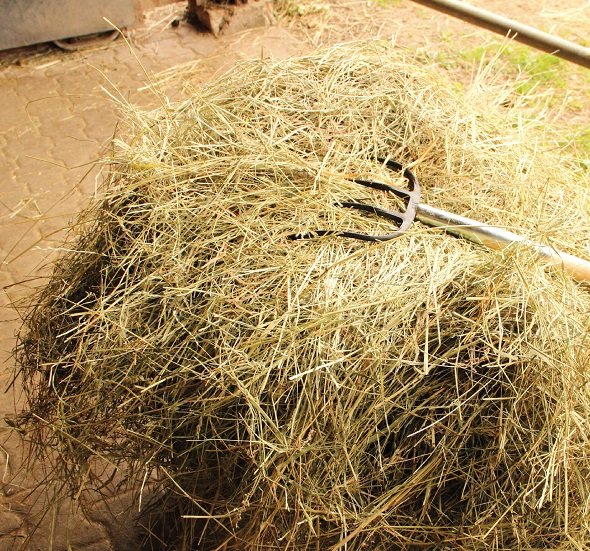
Every weekend, after mowing the lawn, most of us are left with a pile of grass clippings and one big question: what do I do with all of this? For years, I used to bag them up and leave them by the curb without giving it a second thought. It felt like the easiest option, but honestly, it was also a missed opportunity. Grass clippings are packed with nutrients, and they’re one of the most underrated resources you can use around your home and garden.
Instead of treating them as waste, think of them as free fertilizer, mulch, and even craft material. With just a little creativity, grass clippings can serve dozens of purposes that save money, improve your soil, and help you live a bit more sustainably. The best part? You don’t need fancy tools or equipment to put them to good use—just some basic know-how and the willingness to experiment.
Here are 13 amazing things you can start doing with your grass clippings the very next time you mow your lawn.
1. Use as Natural Lawn Fertilizer

One of the simplest things you can do with grass clippings is to let them stay right on the lawn after mowing. When the blades of grass decompose, they release nitrogen back into the soil—a nutrient your lawn craves to stay lush and green. This process is called “grasscycling,” and it’s like giving your yard a free dose of fertilizer every time you mow.
I’ve noticed that when I leave clippings behind, the lawn looks healthier within a week or two compared to when I bag them. The soil seems richer, and it even holds moisture better. It’s a no-fuss, no-cost way of improving your yard without buying chemical fertilizers.
If you’re worried about clippings looking messy, don’t be. A mulching mower chops them finely enough that they settle down into the grass and disappear quickly. You won’t even notice them, but your lawn definitely will.
2. Mulch for Garden Beds
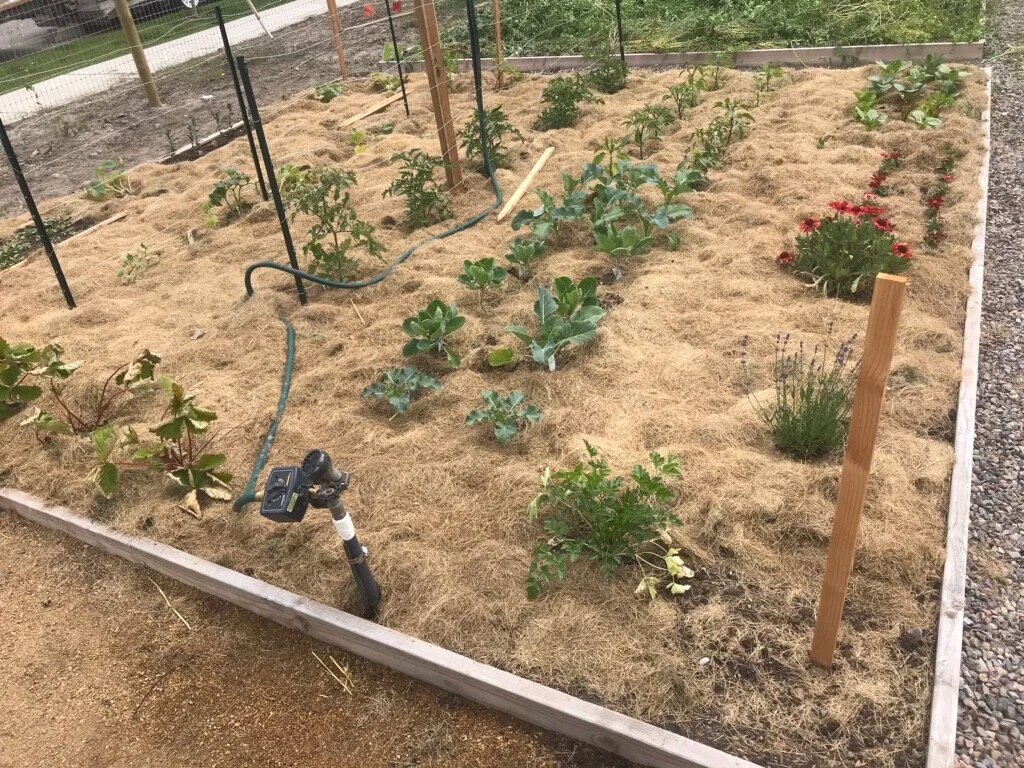
Grass clippings also make excellent mulch for your garden beds. When you spread a thin layer around flowers or vegetables, they act like a blanket, keeping the soil cool and locking in moisture. On hot summer days, this can mean the difference between a wilting plant and one that thrives.
I like using clippings around tomato plants and peppers in my vegetable garden. Not only do they keep the soil damp longer, but they also cut down on how often I have to water. Plus, they break down naturally and enrich the soil as they decompose—so it’s like a two-in-one solution.
The key is to use clippings in moderation. If you pile them too thick, they can clump together and start to smell. A thin layer, refreshed every few weeks, works perfectly.
3. Add to Compost Pile
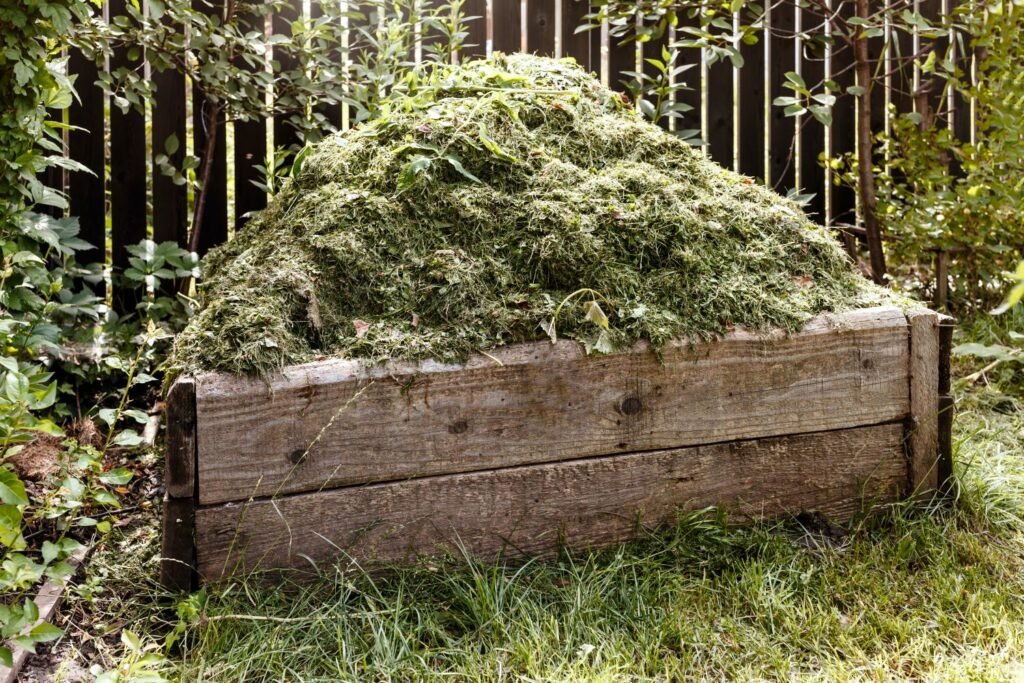
If you have a compost pile, grass clippings are gold. They’re considered “green material,” meaning they’re rich in nitrogen, which is essential for breaking down organic matter. When you balance them with “brown material” like dried leaves, shredded paper, or cardboard, your compost heats up and breaks down much faster.
I used to struggle with compost that just sat there doing nothing. Once I started adding clippings, the pile became active and lively. You could actually feel the heat coming off it, which is exactly what you want. Within a few months, I had dark, crumbly compost perfect for feeding my plants.
Just remember to mix them in rather than dumping them in a big wet pile. Otherwise, the clippings can get slimy. Alternating layers of grass and browns keeps everything aerated and balanced.
4. Grass Tea Fertilizer
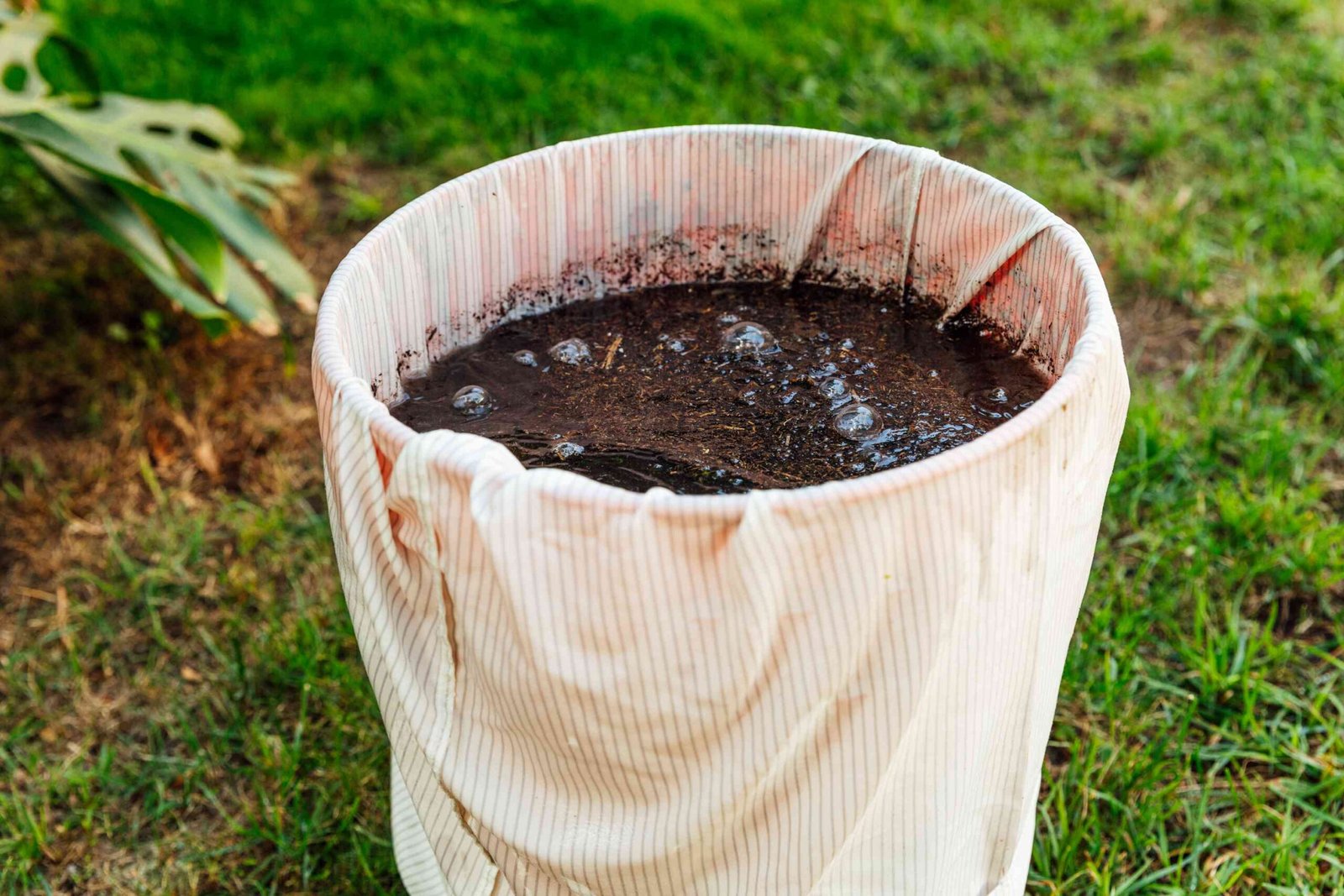
Here’s a trick many gardeners don’t know: you can turn grass clippings into a liquid fertilizer known as “grass tea.” All you need to do is fill a bucket with water, toss in a few handfuls of fresh clippings, and let it steep for two or three days. The water turns into a nutrient-rich “tea” that plants absolutely love.
I tried this one summer when my vegetable plants looked a little pale, and within a week of watering them with grass tea, they perked up. It’s like giving your plants a shot of vitamins without spending a dime on store-bought fertilizer.
The best part is that it’s simple and chemical-free. You can pour the tea directly at the base of your plants or even use it as a foliar spray if you strain it well.
5. Weed Suppressant
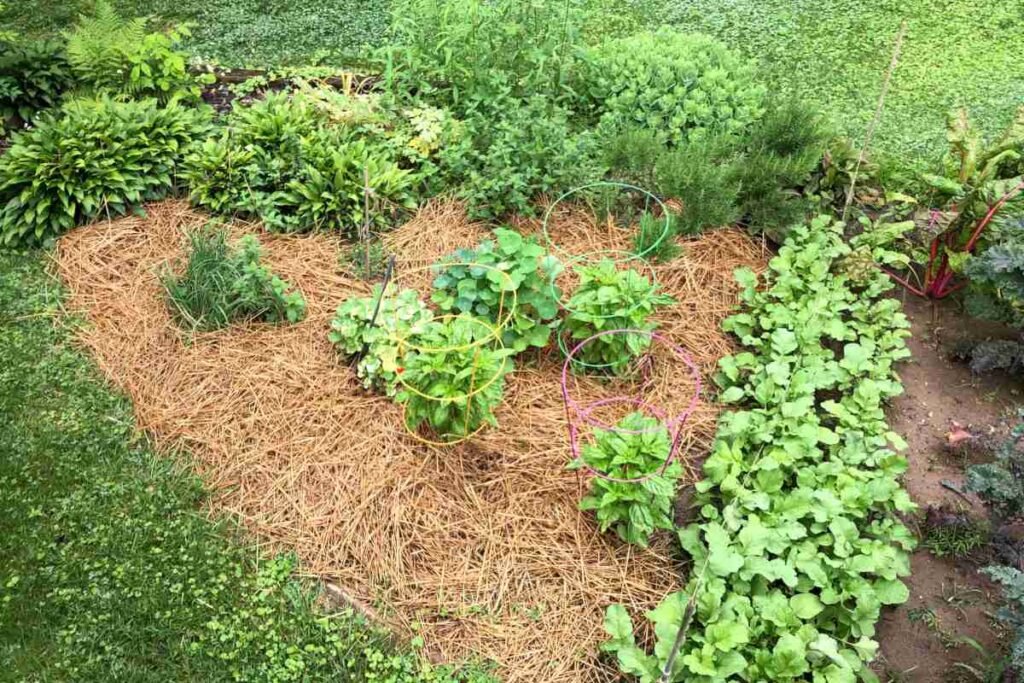
If you’re tired of weeds popping up between your garden rows, grass clippings can help. When spread in a thin layer, they block sunlight from reaching weed seeds, preventing them from germinating. Over time, they also break down into organic matter that benefits the soil.
I often spread clippings in the pathways between my raised garden beds. Not only does it keep weeds down, but it also gives me a clean surface to walk on when the ground is damp. It’s a simple, low-cost alternative to store-bought weed barriers.
Of course, you’ll want to avoid using clippings that come from lawns treated with herbicides, since they could harm your plants. Stick to untreated grass for the best results.
6. Erosion Control

Bare soil is vulnerable to erosion, especially if you live on a slope or have areas where water tends to wash the dirt away. Grass clippings can provide a quick fix by holding the soil in place and absorbing some of the water.
I’ve used them to cover patches in my yard where the grass wasn’t growing yet, and they helped keep the soil steady during heavy rains. Within a few weeks, new grass sprouted up without being washed away.
It’s not a permanent solution, but it buys you time and helps the ground stay stable while new plants establish themselves.
7. Pathway Cushioning

If you’ve got garden pathways that get muddy after a rain, try layering them with grass clippings. They create a soft, cushioned surface that keeps your shoes cleaner and makes walking through the garden more pleasant.
When I built my first vegetable garden, the pathways quickly turned into mud after I watered. Tossing down a layer of clippings solved the problem instantly. They break down over time, but you can easily refresh the paths after each mowing.
It’s also a nice way to recycle clippings without much effort. You’ll get a natural, biodegradable covering that serves its purpose and then returns to the soil.
8. Animal Bedding
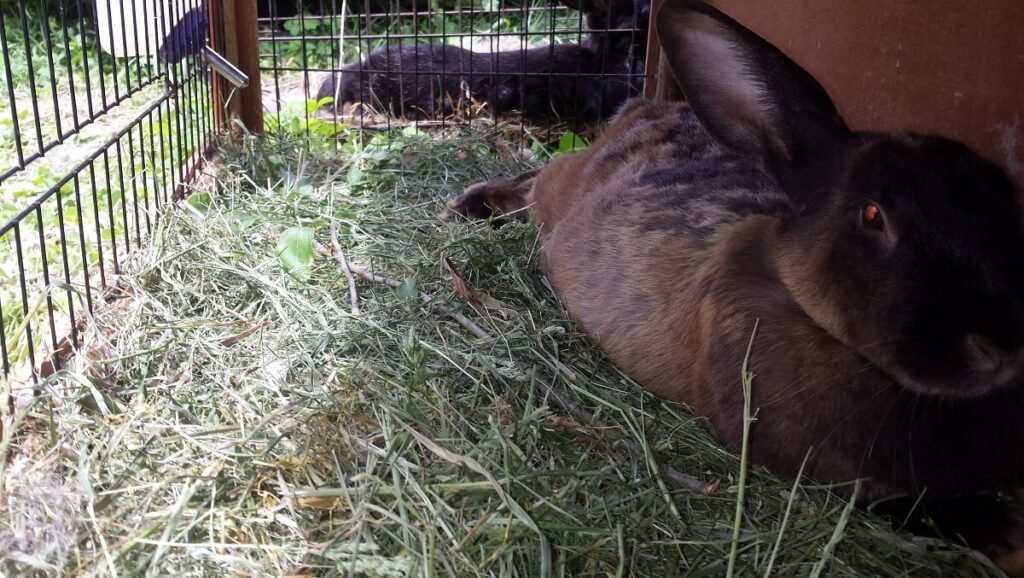
If you raise chickens, rabbits, or goats, dried grass clippings can be a lifesaver. They’re soft, comfortable, and readily available during mowing season. As long as the grass is chemical-free, it’s a safe and inexpensive option for animal bedding.
I’ve lined my chicken coop with dried clippings, and the hens seemed perfectly happy scratching through it. It also composts quickly once you clean it out, which is an added bonus.
Just make sure the clippings are thoroughly dried before using them, as damp ones can get moldy and create health issues for animals.
9. Animal Feed (with caution)

In some cases, grass clippings can double as animal feed. Fresh clippings can supplement the diets of cows, goats, or rabbits, giving them an extra source of nutrition. But this should always be done carefully and in moderation.
Animals tend to enjoy the fresh taste, and it can cut down on feed costs during the growing season. I’ve given my rabbits small handfuls, and they happily devour them.
That said, never feed moldy or fermented clippings, as they can make animals sick. And, again, clippings from chemically treated lawns should always be avoided.
10. Pest Deterrent
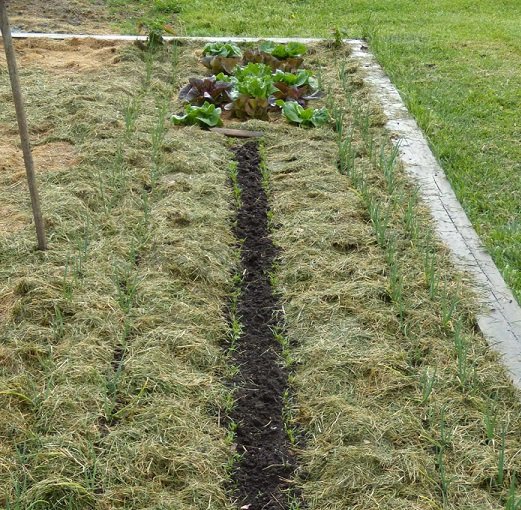
Grass clippings can even play a role in keeping pests away from your garden. A layer of clippings spread around plants can discourage slugs, snails, and some crawling insects from getting too close.
I’ve noticed fewer slug problems in areas where I used clippings as mulch compared to bare soil. The clippings seem to create a barrier that pests don’t like crossing.
This method isn’t foolproof, but it can be an extra line of defense when combined with other natural pest control strategies.
11. Homemade Paper or Crafts
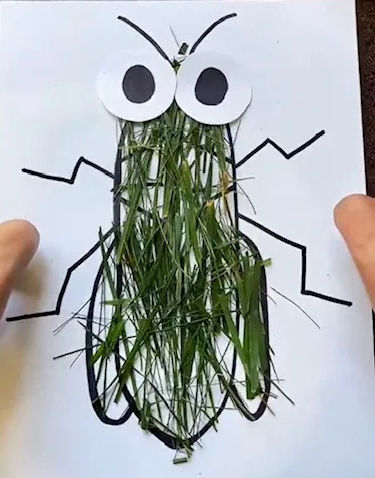
For the creative types, grass clippings can be turned into paper or used in crafting. The fibers add a unique texture and greenish tint to homemade paper, making it perfect for cards, art projects, or journals.
I once tried papermaking with a mix of clippings and recycled paper pulp, and the results were surprisingly beautiful. It gave the paper a rustic look that you just don’t get from store-bought sheets.
It’s not something you’ll do every week, but if you enjoy DIY projects, it’s a fun way to transform a waste product into something functional and artistic.
12. Fuel for Biogas or Compost Heat

Grass clippings decompose quickly and release a lot of energy, making them a great feedstock for small biogas systems. If you’re into sustainable living, they can help generate methane for cooking or heating.
Even if you don’t have a biogas setup, you can use clippings to heat up a compost pile. A fresh layer of clippings can raise the internal temperature, which speeds up decomposition and kills weed seeds.
It’s pretty amazing to think of your lawn waste producing usable energy, but that’s exactly what happens when you harness its natural breakdown process.
13. Grass-Clipping Hay for Mulch Storage

Instead of using clippings right away, you can dry them out and store them for later use. This creates a stockpile of “grass hay” you can pull from during the fall and winter when fresh clippings aren’t available.
I’ve done this by spreading clippings thinly on a tarp and letting the sun dry them for a couple of days. Once crisp, they can be bagged and stored in a dry place.
Come winter, it’s handy to have a stash of organic matter ready for mulching or composting. It feels like you’re saving a little piece of summer to use later.
Tips & Precautions
While grass clippings are versatile, there are a few things to keep in mind. Always avoid using clippings from chemically treated lawns on edible gardens or as animal feed. Thick, wet piles can also turn slimy and smelly, so spread them thin or mix them with other materials. And if you’re storing them, make sure they’re completely dry to prevent mold.
Wrap Up
Grass clippings may seem like a messy byproduct of lawn care, but in reality, they’re a resource waiting to be tapped. From feeding your soil and protecting your plants to crafting, composting, or even fueling sustainable energy, there’s so much you can do with them. The best part is that all of these ideas save money, reduce waste, and give back to your home in some way.
The next time you’re tempted to bag up your clippings and haul them to the curb, pause for a moment. With just a little creativity, those clippings can become fertilizer, mulch, animal bedding, or even art. What looks like waste today could be the secret ingredient your garden, home, or hobby needs tomorrow.

